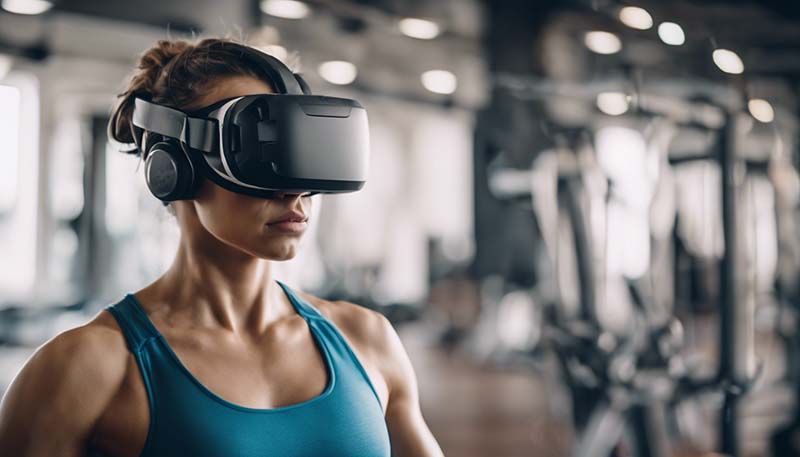How VR is Revolutionizing the Fitness Industry
The article begins by discussing the growing popularity of virtual reality (VR) technology and its potential to transform various industries. The fitness industry, in particular, has been experiencing a significant impact due to the immersive and interactive nature of VR.
Section 1: The Benefits of VR for Fitness
This section highlights the numerous advantages of using VR for fitness purposes. Some of the key benefits include:
1. Immersive and Engaging Experience: VR provides a fully immersive experience, allowing users to feel like they are in a different environment. This can make workouts more enjoyable and engaging, leading to increased motivation and adherence.
2. Customizable Workouts: VR fitness platforms offer a wide range of customizable workouts, catering to different fitness levels, preferences, and goals. This enables users to tailor their workouts to their specific needs and requirements.
3. Social Interaction: Many VR fitness platforms allow users to connect with friends and other fitness enthusiasts, creating a sense of community and social interaction. This can help users stay motivated and accountable.
4. Accessibility: VR fitness can be done from the comfort of one\'s home, eliminating the need for expensive gym memberships or travel time. This makes it an accessible and convenient option for many individuals.
Advertisement
Section 2: Popular VR Fitness Platforms and Applications
This section provides an overview of some of the most popular VR fitness platforms and applications currently available. Some of the platforms mentioned include:
1. FitXR: A VR fitness platform that offers a variety of workout options, including boxing, dance, and cardio workouts.
2. Beat Saber: A rhythm-based VR game that involves physically cutting through blocks in time with music, providing an engaging and effective workout.
3. Supernatural: A VR fitness app that combines cardio, strength training, and mindfulness exercises, offering a comprehensive workout experience.
4. BoxVR: A boxing-based VR workout that provides a high-intensity, full-body workout while improving coordination and reflexes.
Section 3: Challenges and Limitations
While VR fitness has numerous benefits, there are also some challenges and limitations to consider. Some of the key challenges include:
1. Cost: VR headsets and compatible equipment can be expensive, potentially limiting accessibility for some individuals.
2. Motion Sickness: Some users may experience motion sickness or dizziness while using VR, particularly during more intense or fast-paced workouts.
3. Limited Space: VR workouts require a certain amount of physical space to move freely and avoid collisions with objects or walls.
4. Privacy Concerns: Some VR fitness platforms may collect and store personal data, raising concerns about privacy and data security.
Section 4: Future Developments and Opportunities
The article concludes by discussing the potential future developments and opportunities for VR in the fitness industry. Some possible advancements include:
1. Improved Hardware: As VR technology continues to advance, we can expect more affordable and user-friendly headsets with enhanced features and capabilities.
2. Increased Accessibility: As VR becomes more mainstream, it is likely to become more accessible to a wider audience, including those with physical limitations or disabilities.
3. Personalized Workouts: Future VR fitness platforms may offer more personalized and adaptive workouts, taking into account individual fitness levels, goals, and preferences.
4. Integration with Other Technologies: VR fitness may be integrated with other technologies, such as wearable devices or AI-powered personal trainers, to provide a more comprehensive and customized fitness experience.

In conclusion, VR has the potential to revolutionize the fitness industry by offering immersive, engaging, and customizable workout experiences. While there are some challenges and limitations to consider, the future of VR fitness looks promising, with advancements in technology and increased accessibility likely to drive further growth and innovation in the years to come.
Comment